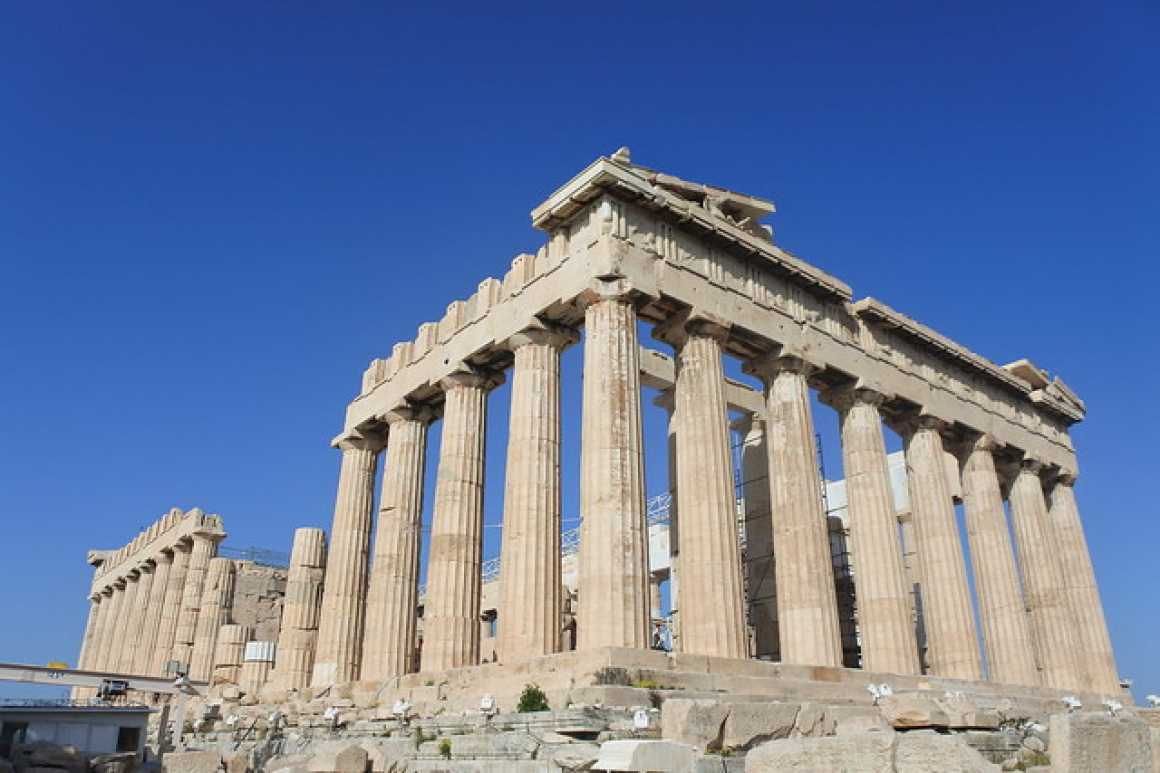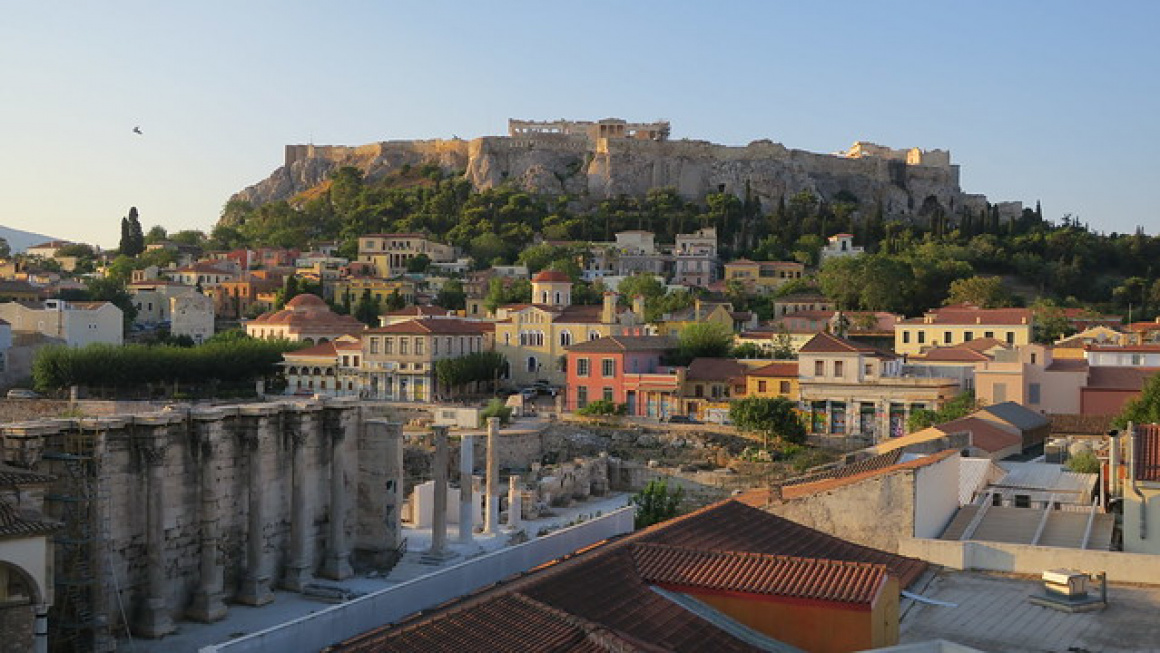The Acropolis of Athens rises above the modern city as a living testament to Greece’s cultural legacy, seamlessly blending history, artistry, and the ideals of democracy into an enduring symbol of human achievement. Perched atop a rocky plateau overlooking the city, this ancient citadel has been the heart of Athens for millennia, embodying the city’s spirit and its connection to the goddess Athena. But what exactly is the Acropolis of Athens, and why does it hold such significance?

 'Acropolis' - Attribution: Aleksandr Zykov
'Acropolis' - Attribution: Aleksandr ZykovWhat is the Acropolis of Athens?
The Acropolis is an ancient complex of buildings that served as the city’s religious and cultural hub in antiquity. At its centre is the iconic Parthenon, a temple dedicated to Athena, the city’s patron deity and the namesake of Athens. Beyond the Parthenon, the site includes remarkable structures such as the Erechtheion, with its sculpted Caryatids, and the Temple of Athena Nike, perched gracefully on the edge of the hill. Far from being just a collection of ruins, the Acropolis is a lasting tribute to Athens’ golden age, a period when philosophy, art, and democracy flourished, leaving a legacy that still inspires the world today.
When Was the Acropolis of Athens Built?
The Acropolis is an enduring symbol of ancient ingenuity and resilience. While the hill itself has been inhabited since Mycenaean times (c. 1600–1100 BC), the structures that crown it today were built during the 5th century BC. This period, under the leadership of Pericles, marked Athens’ cultural zenith, and the construction of the Parthenon, between 447 and 432 BC, showcased the era’s architectural and artistic brilliance.
Highlights of the Acropolis
The Parthenon
The Parthenon, the largest and most recognisable structure on the Acropolis, is a masterpiece of Doric architecture. Constructed from gleaming Pentelic marble, its harmonious proportions and detailed sculptural decorations celebrate Athena and the achievements of Athenian democracy.
The Erechtheion
This unique temple is famed for its Porch of the Caryatids, where six sculpted female figures serve as columns. According to legend, the Erechtheion was built on the sacred ground where Athena and Poseidon competed for the city’s patronage, adding layers of myth and history to its allure.
The Propylaea and Temple of Athena Nike
The grand Propylaea serves as the ceremonial gateway to the Acropolis, welcoming visitors with its elegant columns. Nearby, the diminutive yet exquisite Temple of Athena Nike offers stunning views over the city and honours Athena’s role as the bringer of victory.

 'Parthenon # 3' - Attribution: Luke McKernan
'Parthenon # 3' - Attribution: Luke McKernanExploring the Southern Slope and Theatre of Dionysus
While the Parthenon and other structures on the summit draw the most attention, the southern slope of the Acropolis offers an equally captivating journey into ancient life. The Theatre of Dionysus, considered the birthplace of classical drama, is a highlight. Here, ancient Athenians gathered to watch the works of playwrights such as Sophocles and Euripides come to life. This area also reveals remnants of sanctuaries and cultural spaces that played a significant role in the daily lives of the city’s inhabitants.
Another rewarding experience is finding quiet corners near the southern slope, where you can appreciate the Acropolis’ scale and history away from the main crowds. For a different perspective, some rooftop cafés in nearby Plaka provide stunning views of the Acropolis, particularly at sunset.
Planning Your Visit to the Acropolis
When visiting the Acropolis of Athens, a bit of planning can greatly enhance your experience. To save valuable time, especially during peak tourist seasons, it’s wise to purchase your Acropolis of Athens tickets online in advance. Combination tickets are a smart choice if you plan to explore other ancient sites in the city, such as the Ancient Agora.
Timing your visit can make a significant difference. Arriving early in the morning or late in the afternoon not only helps you avoid the crowds but also allows you to experience the beauty of the marble structures in softer, golden light, making it perfect for photos and quiet reflection.
Here’s a useful tip: between November 1 and March 31, all archaeological sites in Athens, including the Acropolis and Parthenon, offer free entry on the first Sunday of each month—a fantastic opportunity to explore these iconic landmarks without spending a cent.
Since the pathways can be uneven and slippery in places, sturdy, comfortable shoes are essential. If you’re visiting in the summer, be prepared for the strong Athenian sun by bringing a hat, sunscreen, and plenty of water to stay cool and hydrated as you explore this magnificent site.
The Acropolis Museum: A Modern Treasure
Located a short walk from the Acropolis itself, the Acropolis Museum is an essential stop to complement your visit to the ancient monument. This award-winning museum is housed in a sleek modern building and displays countless artefacts uncovered from the Acropolis, including sculptures, friezes, and everyday objects that reveal the daily life and religious practices of ancient Athenians.
While the Acropolis monument gives you a sense of grandeur, the museum offers the historical and cultural context that brings it all to life. Don’t miss the stunning top-floor gallery, where the Parthenon sculptures are displayed in alignment with the temple, visible through the museum’s glass walls.

 'Acropolis Museum' - Attribution: Scott McLeod
'Acropolis Museum' - Attribution: Scott McLeodBeyond the Acropolis: Exploring Nearby Landmarks
Descending from the Acropolis, you’ll find a wealth of nearby sites that complement its grandeur. The Ancient Agora, once the bustling centre of Athenian public life, is just a short walk away and offers fascinating insights into civic and commercial activities. Wander along the charming streets of Anafiotika, a Cycladic-style neighbourhood that feels like an island oasis in the heart of the city.

 'Acropolis of Athens from Monastiraki' - Attribution: Terrazzo
'Acropolis of Athens from Monastiraki' - Attribution: TerrazzoWhy the Acropolis is a Must-See in Athens
The Acropolis of Athens isn’t merely a historical site—it’s a timeless symbol of a civilisation that shaped the world. Its enduring beauty and cultural significance make it an essential destination for anyone visiting Athens. Whether you marvel at its ancient structures, explore its quieter southern slope, or enjoy its illuminated silhouette from afar, the Acropolis leaves a lasting impression on all who encounter it.
For more about what attractions to see in Athens and the treasures that surround this magnificent landmark, let the Acropolis inspire your journey through the city.

